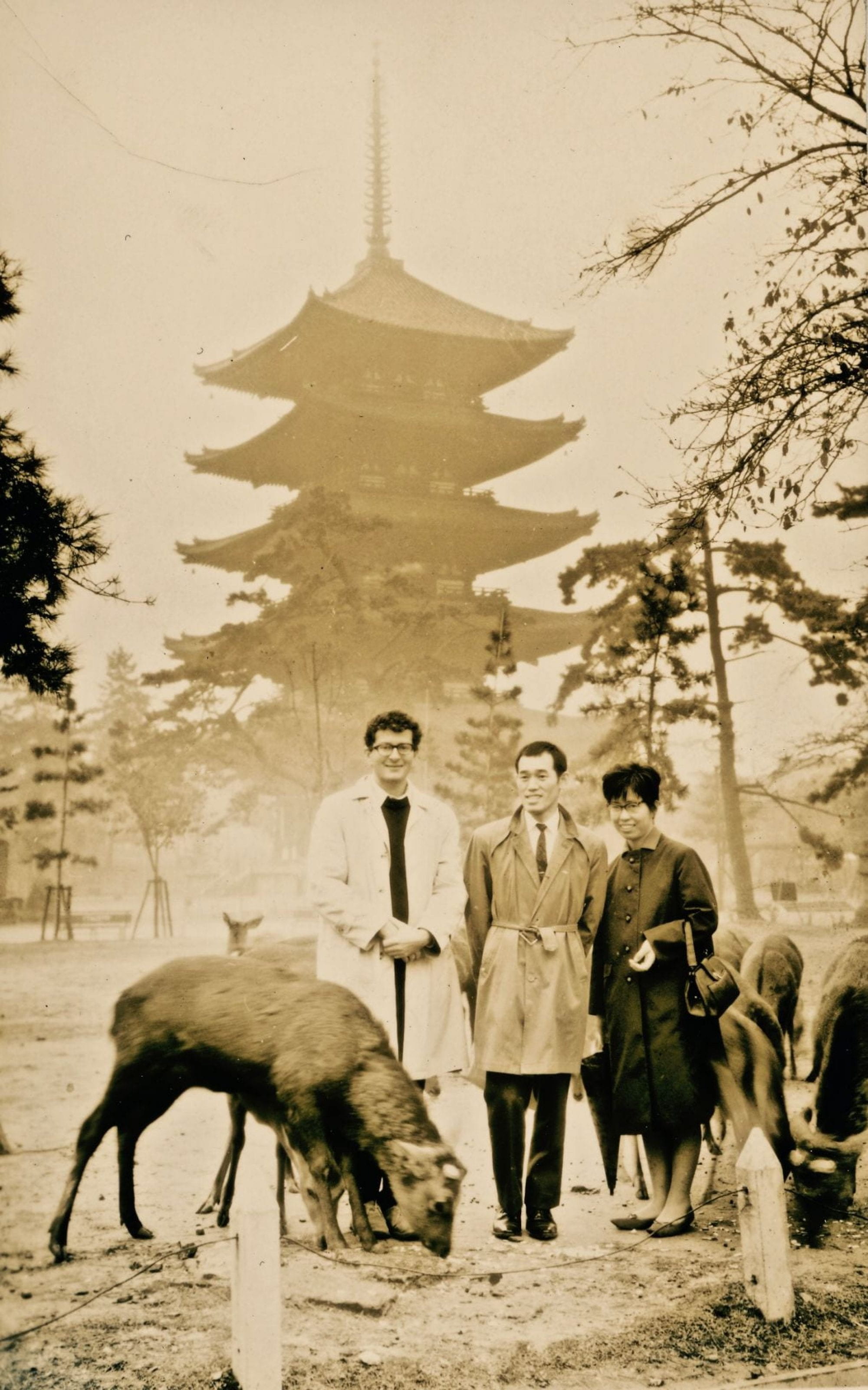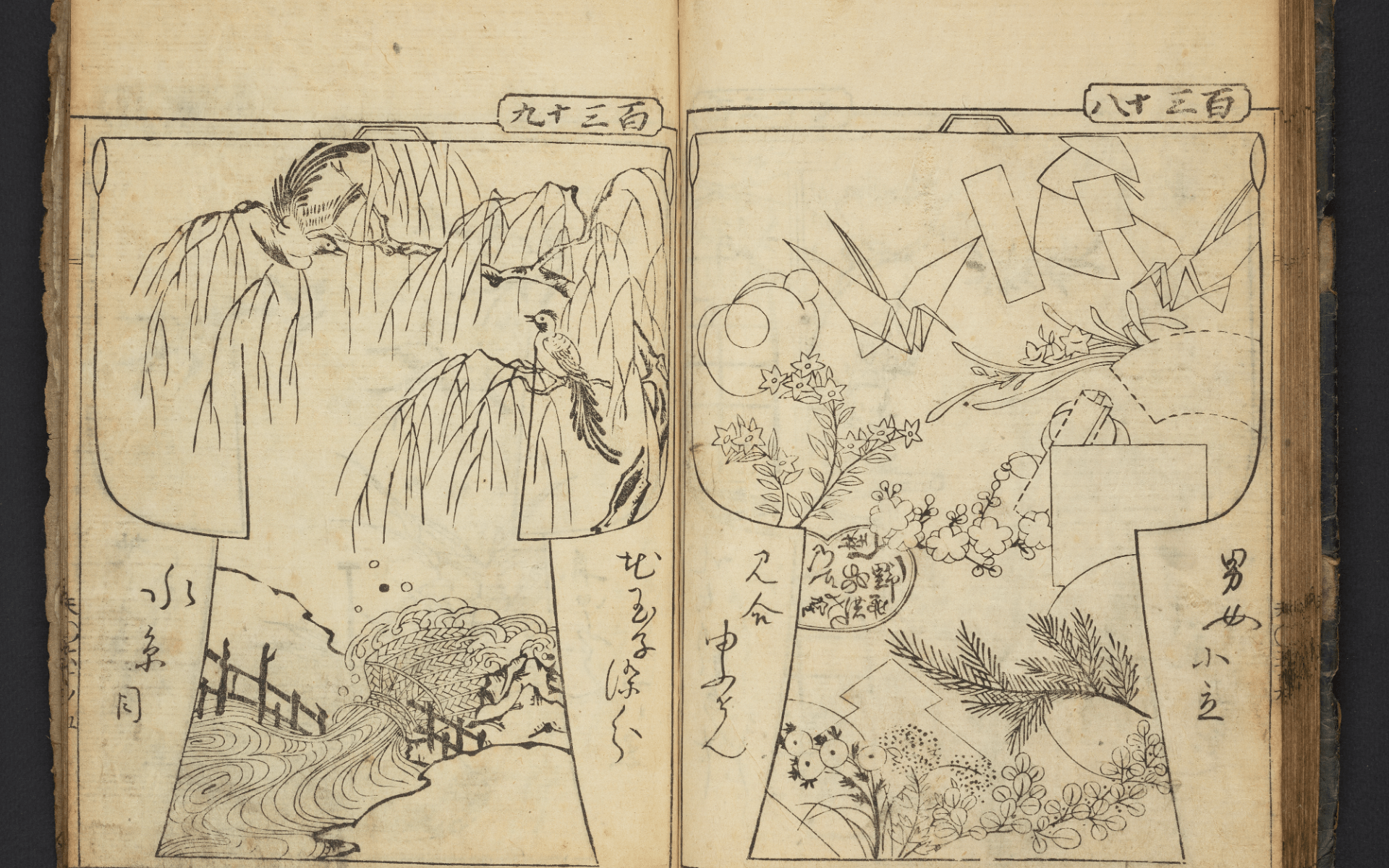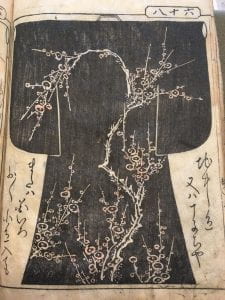Artist: Nakajima Tanjirō 中嶋丹次郎
Title: Hīnagata Amanohashidate 雛形天の橋立 (Pattern Book: Amanohashidate)
Date: 1730
Medium: Woodblock print, black ink on paper.
Gift of Arthur Tress, Arthur Tress Collection Box 55 Item 9 (https://franklin.library.upenn.edu/catalog/FRANKLIN_9977502848103681)
Nakajima Tanjirō’s Hīnagata Amanohashidate is a book of kimono designs, ranging from simple black and white foliate patterns to elaborate imaginary landscapes replete with animals and dense vegetation. Accompanying the kimono designs are one to two lines of text. In some instances, it could describe the pattern and dictate to the clothier certain techniques or tools that could best render an elaborate design. In other instances, the text could be snippets of poetry whose themes were relayed in the designs. This opening shows a kimono design with auspicious plants associated with the four seasons.
Kimono pattern books, or hinagatabon, were working documents heavily used as cheap and quick references of the latest designs. Yet this was likely not their only appeal. The subtle play between poem and image was a source of entertainment for period viewers wishing to convey their sophistication. And certainly, there was something to be gained by perusing the newest styles for the year and staying current in the fast-moving world of fashion. Tastes changed quickly, and elaborate designs were often the subject of sumptuary regulations sporadically issued to rein in townspeople’s extravagant dress.
This particular volume also presents several of the interesting problems contemporary bibliographers must address when working with Japanese books. The title Hīnagata Amanohashidate appears on the cover slip (daisen), is repeated in the preface of the book, and the character ama is included in the short-form title along the fore-edge (hashira). However, the colophon suggests the title is Hinagata yado no ume (Pattern Book: The Plum Trees of Our Home). Comparison to a digitized copy of Hīnagata Amanohashidate confirms its match to the Tress copy. What appears likely to have occured here is that a colophon page from another book was inserted to create a more desirable product for the secondary market.
Selected Reading
Hillier, Jack. The Art of the Japanese Book. Vol. 1. 2 vols. London: Sotheby’s, 1987.
Siffert, Betty Y. “‘Hinagata Bon’: The Art Institute of Chicago Collection of Kimono Pattern Books.” Art Institute of Chicago Museum Studies 18, no. 1 (1992): 86–103.
Simmons, Pauline. “Artist Designers of the Tokugawa Period.” The Metropolitan Museum of Art Bulletin 14, no. 6 (1956): 133–48.
Posted by Nicholas Purgett
May 10th, 2020



